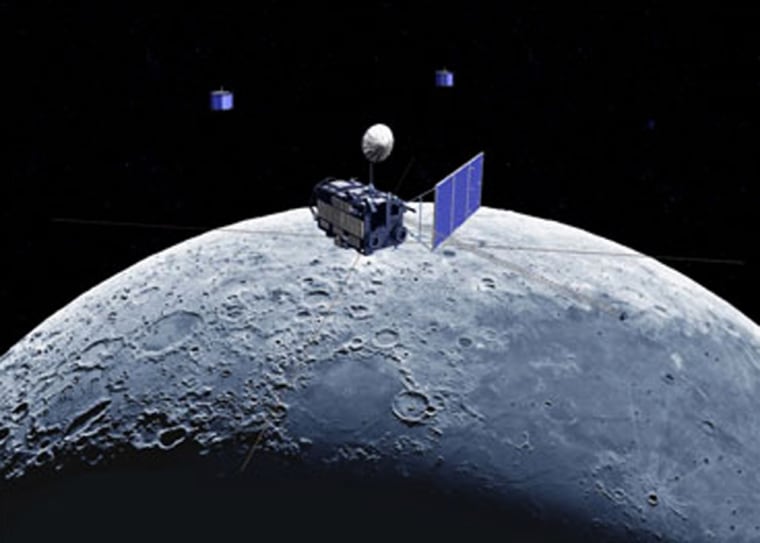Japan's space agency said the mid-August launch of its lunar orbiter will be postponed due to a technical glitch, delivering another setback to the much-delayed probe.
The Selenological and Engineering Explorer — or SELENE — probe was to have been launched aboard one of the space program's mainstay H-2A rockets on Aug. 17, the Japan Aerospace Exploration Agency, or JAXA, said in a statement issued Friday.
However, during an inspection it was discovered that some components were improperly installed on the two smaller satellites that accompany the main orbiter, JAXA said. The components will be replaced, and a new launch date will be announced once it has been determined, it said.
The $264 million SELENE is already four years behind schedule. Japan launched a moon probe in 1990, but that was a flyby mission, unlike SELENE, which is intended to orbit the moon.
It canceled another moon shot, LUNAR-A, that was to have been launched in 2004 but had been repeatedly postponed due to mechanical and fiscal problems.
JAXA says the SELENE project is the largest lunar mission since the U.S. Apollo program.
It involves placing the main satellite in orbit at an altitude of about 60 miles and deploying the two smaller satellites in polar orbits. Researchers will use data gathered by the probes to study the moon's origin and evolution.
The main orbiter will remain in position for about a year.
